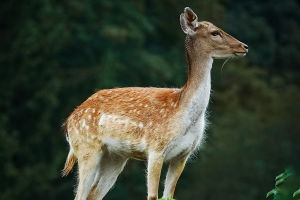Among the myriad wonders of the natural world, dragonflies stand out as captivating creatures, renowned for their iridescent wings and graceful flight.
However, one enduring myth that persists about these enchanting insects is the belief that they live for a mere 24 hours.
In this article, we embark on a journey to debunk this misconception, unraveling the mysteries of dragonfly lifespans and shedding light on the truth behind their remarkable existence. The Lifespan of Dragonflies: Contrary to popular belief, the lifespan of dragonflies extends far beyond a single day. In reality, most species of dragonflies undergo a complex life cycle that spans several months to several years, depending on various factors such as species, habitat, and environmental conditions.
The life cycle of a dragonfly typically consists of three main stages: egg, nymph, and adult. After mating, female dragonflies deposit their eggs in or near water, where they hatch into aquatic nymphs. These nymphs, equipped with specialized appendages for hunting and swimming, undergo a series of molts as they grow and develop in their aquatic habitat. Depending on the species, the nymph stage of a dragonfly's life cycle can last anywhere from several months to several years. During this time, nymphs undergo dramatic transformations, gradually developing wings and other adult characteristics as they prepare for their final molt.
Once mature, nymphs emerge from the water and undergo a remarkable metamorphosis into adult dragonflies. The duration of this transition varies among species but typically lasts a few hours to a few days. Upon emerging, adult dragonflies are fully formed and equipped for flight, with vibrant colors and intricate wing patterns that distinguish them as some of nature's most exquisite aerial acrobats.
The Adult Stage: Contrary to the misconception that dragonflies perish shortly after emerging from their nymphal stage, adult dragonflies can actually live for several weeks to several months, depending on factors such as environmental conditions, predation, and reproductive activity.
During their relatively brief adult stage, dragonflies engage in a flurry of activity, including mating, feeding, and territorial defense. Male dragonflies are often observed engaging in elaborate aerial displays to attract mates, while females are tasked with laying eggs in suitable aquatic habitats. While the adult lifespan of dragonflies may be fleeting compared to their earlier stages, their existence serves a crucial role in ecosystems worldwide.
As voracious predators of mosquitoes and other flying insects, adult dragonflies play a vital role in controlling insect populations and maintaining ecological balance. Dispelling the Myth: The misconception that dragonflies only live for 24 hours likely stems from a misinterpretation of their adult lifespan, coupled with their ephemeral appearance in certain environments. While it is true that adult dragonflies may be short-lived compared to other organisms, their overall lifespan is far more substantial, encompassing multiple stages of development and contributing to the intricate tapestry of life on Earth.
In the realm of myths and misconceptions, the belief that dragonflies only live for 24 hours stands as a testament to the enduring fascination and mystery surrounding these captivating creatures. Through an exploration of their complex life cycle and remarkable adaptations, we have gained a deeper understanding of the truth behind dragonfly lifespans, dispelling the myth and revealing the awe-inspiring reality of their existence. As guardians of freshwater ecosystems and symbols of grace and beauty, dragonflies continue to inspire wonder and admiration, reminding us of the boundless wonders of the natural world.


